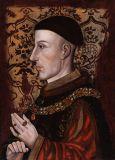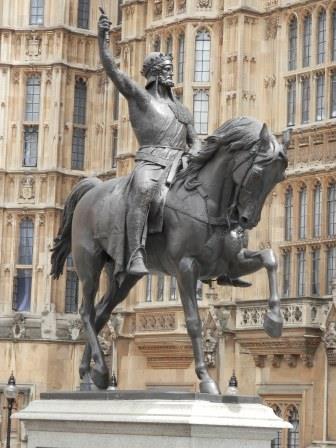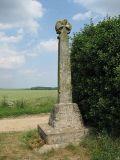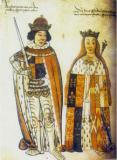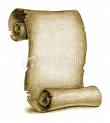Archive for the ‘Events in History’ Category
9 APRIL 1483
6 APRIL 1199
Richard I (the ‘Lionheart’) died from an infected arrow wound to his shoulder. He received this by accident while besieging the small, virtually unarmed castle of Chalus-Chabrol.
Richard was born on 8 September 1157, the third son of Henry II and Eleanor of Aquitaine.
He was crowned King of England on 3 September 1189. Richard spend only 6 months of his reign in England, first going on the Third Crusade, on his return he was imprisoned in Austria. His mother worked hard to raise the ransom of 150,000 marks (65,000 pounds of silver) equaling 2–3 times the annual income for the English Crown at that time.
2 APRIL 1502
31 MARCH 1204
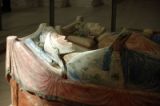 Death of Eleanor of Aquitaine. She was first married to Louis VII of France, from 1137 until their divorce in spring 1352. She married Henry II of England in May 1352. At the time of her death she was 82.
Death of Eleanor of Aquitaine. She was first married to Louis VII of France, from 1137 until their divorce in spring 1352. She married Henry II of England in May 1352. At the time of her death she was 82.
She was buried at the abbey church in Fontevrault, next to her second husband. Several of their children, including their son Richard I ‘the Lionheart’ are also buried there.
Source: ODNB ‘Eleanor , suo jure duchess of Aquitaine (c.1122–1204)’
Photograph of the tomb effigies of Eleanor of Aquitaine and Henry II at Fontevrault Abbey taken by ElanorGamgee; obtained through Wikimedia Commons.
Battle of Towton
Battle of Towton – the bloodiest battle ever fought on English soil
The Battle of Towton , regarded as “the largest and bloodiest battle ever fought on English soil”, was fought in a snow storm on Palm Sunday, 29 March 1461, between the Lancastrian forces of King Henry VI and the Yorkist forces led by Edward, Earl of March. It has been said that 28,000 men died that day, out of 50,000 to 100,000 soldiers. The result was a Yorkist victory and Edward became king as Edward IV.
In 1996 a mass grave of fallen soldiers was found at Towton Hall. Their remains have been studied by the University of Bradford.
Edward IV had planned to build a memorial chapel at Towton, but it was Richard III, who put this plan into action. The chapel was nearly finished, when he was killed at Bosworth, and the chapel had been lost. Or so it was thought. In October 2013 it was revealed that scientists had found strong evidence of remains of the chapel.
In 2010 fragments of hand held guns and lead shot were found at the battle site, the earliest ever to be found.
References:
James Clark, ‘The Medieval Somme: forgotten battle that was the bloodiest fought on British soil’, The Conversation (13 July 2016). URL: https://theconversation.com/the-medieval-somme-forgotten-battle-that-was-the-bloodiest-fought-on-british-soil-62129 [last accessed 2 March 2020]
Helen Cox, ‘The Battle of Towton is alive and well in Yorkshire’, Herstory Writing & Interpretation.. Link “Towton” on URL: http://helencox-herstorywriting.co.uk/articles/4539783477 [last accessed 2 March 2020]
T. Sutherland & A. Schmidt,’The Towton Battlefield Archaeological Survey Project: An Integrated Approach to Battlefield Archaeology’, Landscapes, Vol.4, Issue 2 (October 2003), pp.15-25. Available at URL: https://www.researchgate.net/publication/238691750_The_Towton_Battlefield_Archaeological_Survey_Project_An_Integrated_Approach_to_Battlefield_Archaeology [last accessed 2 March 2020]
‘Richard III Towton chapel remains are ‘found’’, BBC News York & North Yorkshire (7 Oct 2013). URL: http://www.bbc.co.uk/news/uk-england-york-north-yorkshire-24434795 [last accessed 2 March 2020]
A short description of the various battles of the Wars of the Roses can be found on the website of the Richard III Society.
Dorothea Preis
END OF MARCH 1484
Skirmish at Ferrybridge
Skirmish at Ferrybridge
On 28 March 1461, a skirmish at Ferrybridge, West Yorkshire, was fought in the lead-up to the Battle of Towton. Richard Neville, Earl of Warwick (‘The Kingmaker”), received an arrow wound to the leg. John, Lord Clifford, (believed to be responsible for the death of Edward IV’s brother Edmund, Earl of Rutland) fell on the Lancastrian side.
Traditionally the skirmishes at Ferrybridge and Dintingdale (also on 28 March 1461) and the battle of Towton were seen as three separate battles, both in space and time. However, Tim Sutherland argues, that these were rather three interconnected conflicts. He bases his analysis on archaeological finds and a new interpretation of the sources.
Reference:
Tim Sutherland, ‘Killing Time: Challenging the common perceptions of three medieval conflicts – Ferrybridge, Dintingdale and Towton — ”The Largest Battle on British Soil”’, Journal of Conflict Archaeology, Vol.5 No.1 (2010). Available from URL: http://www.towton.org.uk/wp-content/uploads/killing-time_tim_sutherland.pdf [last accessed 2 March 2020]
A short description of the various battles of the Wars of the Roses can be found on the website of the Richard III Society.
27 MARCH 1482
 Death of Mary of Burgundy, stepdaughter of Margaret of York (sister of Edward IV and Richard III). More information on Mary here.
Death of Mary of Burgundy, stepdaughter of Margaret of York (sister of Edward IV and Richard III). More information on Mary here.

